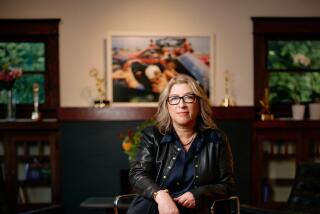Teens on Drug Prevention : Essay winners give their alternatives to ‘Just Say No’
- Share via
What do kids think it takes to keep their peers off drugs?
An essay contest designed to increase understanding about public health issues has produced four San Fernando Valley winners with strong opinions about what works--and what doesn’t.
Los Angeles-area ninth- and 10th-graders were invited by the nonprofit Public Health Foundation Enterprises Inc. and the California Assn. of School Health Educators to respond to the query: “Public health agencies work very hard to send messages to teenagers about the dangers of tobacco, drugs and alcohol. What methods or programs would you create to reach youth more effectively about these very important issues?” Following are excerpts from the essays of the four Valley winners.
* * *
CINDY PALADINES, ninth grade, Herbert Hoover High School, Glendale. Grand prize.
*
Traditional “Just Say No” slogans and campaigns aren’t working because, simply put, [they’re] old. We’ve been hearing the same slogan since we learned how to surf channels. Now we’re surfing the Net. We’re dealing with new technology and new dangers, which means we need a new plan to keep kids out of trouble and in school.
Teens believe they are invincible, that nothing can stop them. I think it’s not enough just to tell us not to do stuff. It’s time to show us what this “stuff” will do to us and to our lives. We should start a program joining addicts or ex-addicts who can tour the nation, going to junior highs and high schools to show that drugs of any kind (and I consider tobacco and alcohol drugs) are not petty things but that they can lead to messed-up lives and even death.
It’s time we quit fooling around with little cartoons and gimmicks and start getting into the gritty facts of life with kids old enough to understand. We have to stop covering each other’s eyes hoping the problem will go away.
ROSARIO PULIDO, 10th grade, Birmingham High School, Van Nuys. First prize.
*
I suggest that if we’re trying to reach teenagers we obtain their interest by hitting them with what they enjoy most. Here is a brief description of what my prevention video would be like:
Scene 1: Background music is playing. The words “Drug Effects” appear on screen, light up, then become ashes and disappear.
Scene 2: The word “Drug” appears and its definition. Drug names are shown really fast, one after the other.
Scene 3: The word “Tobacco” appears and all its dangers.
Scene 4: Teenagers are shown using drugs and “having fun.”
Scene 5: The word “Alcohol” appears and all its dangers.
Scene 6: Teenagers are shown drinking and “having fun.”
Scene 7: The words “Even Worse When Mixed” appear and begin twisting and mixing, resembling a tornado, then drift away.
Scene 8: Destruction by teens. Police officers arrest them. Depressed faces are shown, cars crashing and victims being taken out of their vehicles by paramedics.
Scene 9: Rates of drug-related deaths are presented. A wise voice says: “It’s up to us to inform you about the dangers you face when you use drugs, but it’s up to you to stay alive.” You see the words: “Alcohol+Drugs=Death.” The screen fades. Music begins to play again.
ANGELINA VALLE, 10th grade, James Monroe High School, North Hills. Second prize.
*
I would distribute humorous pamphlets in fluorescent colors with comical illustrations to draw the attention of young people and speak to them about drugs, the risks they run by using then and the extent of the harm they do to themselves.
I would establish in all schools meetings for parents to inform and help them if they have children with drug problems. I would encourage parents to take at least one hour one day a week to talk with their adolescents about the problems they face.
I would establish in every community youth encounter groups through the churches where young people could get together to discuss what causes youth to opt for the road that leads to drug use and, for many, to death.
ANNETTE RIGGIO, ninth grade, Herbert Hoover High School, Glendale. Third prize.
*
Teens need to be talked to by responsible teens or young adults. Maybe more athletes and actors who are good role models could talk to them. Teens need someone to tell them about their own struggles or the way they stayed away from drugs and alcohol. They need someone to speak to them on their level, someone with a positive outlook.
Teens think smoking is trendy. They see their favorite actors and actresses smoking on TV and in the movies, and it’s made to look cool. But actors should be good role models since teens look up to them and want to be like them.
Teens say parents and adults are too hard on them and that makes them want to smoke, do drugs, and drink alcohol more. They need to be taught not to do it, but without pounding it into their heads, because they won’t listen.
Teens are just trying to be rebellious. They need to know that there are other ways to show their individuality, and they need to be educated about the health hazards.
Teens need a place where they can get their questions about anything answered anonymously. They need people they can talk to.


